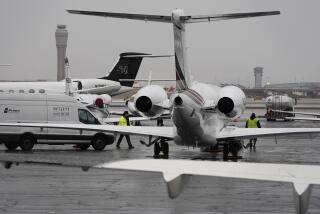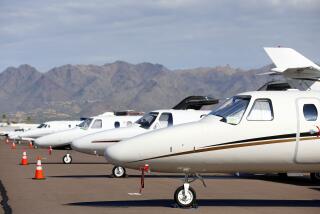FAA drone rule proposal: What they allow, who benefits, who doesn’t
The Federal Aviation Administration over the weekend released proposed rules for small drones for commercial use. Some have said the move has the potential to dramatically change the nation’s airspace for years to come.
“Technology is advancing at an unprecedented pace and this milestone allows federal regulations and the use of our national airspace to evolve to safely accommodate innovation,” U.S. Transportation Secretary Anthony Foxx said over the weekend.
The proposed rules, which at times are outlined in vague terms, must undergo a phase of public and federal review, and would not take effect until 2017 at the earliest.
What the rules allow
All drones have to be under 55 pounds, can fly at a maximum speed of 100 mph and cannot be flown at an altitude of more than 500 feet above the ground. However, with special Air Traffic Control clearance drones can be flown at altitudes between 500 feet and 18,000 feet. The drone must remain in the line of sight of the operator at all times and has to be flown during the daytime. A camera -- though not required -- may be attached to the drone to allow for closer flight observation by the operator.
The operator of the drone must be at least 17 years old and must have passed an “aeronautical knowledge test” and be vetted by the Transportation Security Administration.
What the rules prohibit
Drones cannot be flown at night and operators are not allowed to be in control of more than one drone at a time. Several models of drones have the ability to fly above 500 feet, but the proposed rules ban outright the flight of drones above 18,000 feet.
All operators of drones “may not operate a small unmanned aircraft if he or she knows or has reason to know of any physical or mental condition that would interfere with the safe operation of the drone.” In the proposed rules, the FAA does not outline how it would monitor the mental health of drone operators.
While in flight, a drone cannot be operated over people “not directly involved in the operation.”
Who might benefit from the rules
Really, anyone who wants to fly a drone for commercial purposes and meets the basic criteria. (The FAA allows for the recreational use of drones as long as they conform to certain rules, such as flying below 400 feet and remaining five miles from airports.)
Until now, the FAA has banned the use of commercial drones, though the rules were not strictly enforced. Some companies -- such as film companies Aerial Mob and HeliVideo Productions -- have exemptions from the FAA to use drones.
The proposed rules would make it easier for people like real estate agents, aerial photographers, police departments and farmers to fly small drones for work purposes as long as they have a permit. FAA officials estimate that after the drone rules take effect, 7,000 businesses will get drone permits within three years.
Who won’t benefit
Some companies, such as Amazon, have announced plans to create a service in which drones deliver packages to customers in 30 minutes or less. These rules wouldn’t allow that.
“The FAA’s proposed rules for small UAS [unmanned aircraft systems] could take one or two years to be adopted and, based on the proposal, even then those rules wouldn’t allow Prime Air to operate in the United States,” Paul Misener, Amazon’s vice president of Global Public Policy, told Business Insider.
The drones operated by the company would be out of the line of sight of the operator and would have to be flown over people “not directly involved in the operation.” In December, the company sent a letter to the FAA noting that it would have to relocate its drone research out of the U.S. if it could not conduct more testing outdoors. The company conducts many of its drone tests in the Britain, where drone usage is less restrictive.
What’s next for the rules?
The FAA wants to hear from you. There’s a 60-day open window in which the FAA wants to hear public input on the proposed rules. Submit comments here. The FAA also intends to hold public meetings to discuss ideas with the public, which will be announced at a later time.
Follow @kurtisalee
More to Read
Start your day right
Sign up for Essential California for news, features and recommendations from the L.A. Times and beyond in your inbox six days a week.
You may occasionally receive promotional content from the Los Angeles Times.







